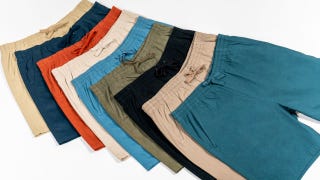
If you’re worried about COVID-19, it’s a no-brainer to make sure you’re up to date on your vaccine and boosters. If it’s polio in New York that you’re worried about, you should check whether you got a polio vaccine as a kid (if not, it isn’t too late to catch up). But when it comes to monkeypox, vaccines are not recommended for most people, and chances are even if you go looking for one, you’ll be turned down.
There are two types of monkeypox vaccines
Table of Contents
The vaccine that we’re calling the “monkeypox vaccine” goes by the brand name Jynneos, and it’s the only vaccine that’s officially FDA-approved for monkeypox. Jynneos is given as a subcutaneous (just under the skin) injection, ideally in two doses, four weeks apart. It uses a live virus that cannot replicate, and it has fewer side effects and is considered safer than its predecessors. This vaccine is limited in supply.
The other vaccine is ACAM2000. The U.S. has 100 million doses of the vaccine in a national stockpile, so you might think this would be the natural choice for preparing the population for a monkeypox outbreak. Unfortunately, it’s a very different vaccine and isn’t considered appropriate for preventing monkeypox in most people—at least for now.
Why aren’t we using ACAM2000 for monkeypox?
While ACAM2000 can be used to prevent monkeypox (it has an emergency use authorization for that purpose), it’s primarily a smallpox vaccine. That’s what it’s fully approved for, and that’s why the U.S. stockpiles it—just in case smallpox were to make a comeback, either naturally or as a biological weapon.
G/O Media may get a commission

70% off
Jachs NY Summer Shorts Sale
Exclusive sale on summer styles
Patterned, plain, twill, and chino, these classic shorts with 7-9″ inseams tell a story—you’re a guy who vacations, maybe on a boat.
If you’ve ever seen an older person point out their smallpox vaccine scar (or if you are one of those people yourself), you might realize where I’m going with this. Vaccination with this type of smallpox vaccine requires pricking the skin with a fork-like needle until it draws blood. You then develop a single lesion in that spot, similar to the sores that are all over the body in a full-blown smallpox infection. If the pustule doesn’t develop within a week or so, you need to go back and get the procedure done again. It’s gross and painful, but well worth it to be protected against smallpox.
ACAM2000 has more frequent and more potentially serious side effects than the Jynneos vaccine. It can’t be used in people who are pregnant, who are immunocompromised, or who have certain skin conditions like eczema. It also carries a 1-in-175 risk of myocarditis, or inflammation of the heart muscle. Because of all these caveats, it isn’t suitable for walk-in vaccine clinics, Vox reports, but instead would be given at a doctor’s visit after carefully considering the risks.
Now, if we had a smallpox epidemic looming? It would absolutely make sense to roll out ACAM2000 to as many people as could safely take it. The risks of smallpox would be greater than the risks of the vaccine. But smallpox is a far more serious disease than monkeypox, with a fatality rate up to 30%. (The current strain of monkeypox has a fatality rate closer to 1%.) The risk/benefit discussion is entirely different.
So far, public health officials have made the judgment call that it’s better to stick with the safer vaccine, even if we don’t have as much of it. That could change, but so far Jynneos is the only vaccine being recommended for people at risk of contracting monkeypox.
Why the Jynneos monkeypox vaccine is in short supply
Compared to the 100 million doses of ACAM2000, we only have a few hundred thousand doses of Jynneos available (including those already administered), with more coming soon—but that may still not be enough. The Washington Post reports that there are 1.6 million men considered to be at high risk of contracting monkeypox, thus requiring 3.2 million doses (since it’s a two-dose vaccine), but the U.S. only has enough vaccine to immunize one-third of them.
There are issues in producing and distributing the vaccine from its manufacturer in Denmark, which has to supply many countries in addition to us. (If you’d like to dig in to the history behind these supply issues, here’s a New York Times story about how we failed to replace 20 million doses in the stockpile that expired, and here’s another on how 300,000 doses that we already owned were stuck overseas due to U.S. government fuckups as the outbreak began to spread.)
With the limitations in supply, vaccines are being distributed to the people who are most at risk of contracting monkeypox. People who know they were exposed to the virus are at the top of the list; if you get the vaccine in the first few days, your immune system can become able to fight off the disease before you get seriously sick. Close contacts of people with monkeypox, and sometimes their close contacts as well, are also likely to be offered the vaccine in a strategy called ring vaccination. In some places, anybody in a high risk group is eligible for vaccination.
The exact rules for who is offered the vaccine will vary from place to place. If you think you fall into one of the above categories, check with your local or state health department about how to get in line for a monkeypox vaccine.
